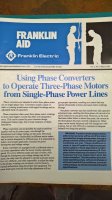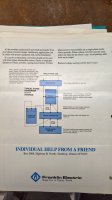Try one of these people: https://franklinaid.com/field-service-engineers/
They closed their comment section unfortunately
Texas
Filiberto Zazueta joined Franklin Electric in 2007 as the company’s Field Service Engineer in northern Mexico. In late 2011 Filiberto moved to his current position as Field Service Engineer for Texas.
Prior to Franklin, Filiberto worked as an Application Engineer for Schneider Electric where he designed electrical distribution systems.
Given his professional background, Filiberto feels his area of expertise lies in electrical instrumentation, sensors and valves, and VFDs.
Random Fact: Filiberto enjoys sports and travel.
Contact Filiberto at fzazueta@fele.com.
They closed their comment section unfortunately
Texas
Filiberto Zazueta joined Franklin Electric in 2007 as the company’s Field Service Engineer in northern Mexico. In late 2011 Filiberto moved to his current position as Field Service Engineer for Texas.
Prior to Franklin, Filiberto worked as an Application Engineer for Schneider Electric where he designed electrical distribution systems.
Given his professional background, Filiberto feels his area of expertise lies in electrical instrumentation, sensors and valves, and VFDs.
Random Fact: Filiberto enjoys sports and travel.
Contact Filiberto at fzazueta@fele.com.
Last edited:


